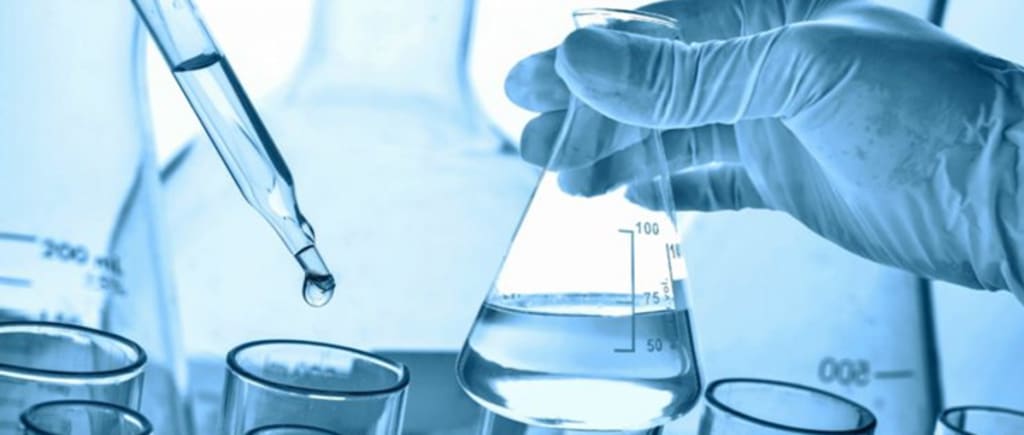Balancing Act: Achieving Water Quality Standards with Reverse Osmosis
The significance of reverse osmosis plants, and the broader spectrum of water treatment processes

Water is a vital resource that sustains life, and ensuring its quality is of paramount importance. With growing concerns about water pollution and scarcity, communities and industries are increasingly turning to advanced technologies like reverse osmosis (RO) to meet stringent water quality standards. In this blog post, we will delve into the intricacies of water quality testing, the significance of reverse osmosis plants, and the broader spectrum of water treatment processes.
Water Quality Testing: The Foundation
Water quality testing is the bedrock of ensuring the safety of our water supply. Whether for drinking water, industrial processes, or recreational activities like swimming, regular testing is crucial. To begin this journey towards water quality assurance, individuals often search for "water testing labs near me" to access professional testing services. These labs employ sophisticated techniques to assess various parameters, including chemical composition, microbial content, and physical characteristics.
One critical aspect of water quality testing is checking water hardness. Hard water, characterized by elevated mineral content, can lead to various issues, including scale buildup in pipes and reduced soap effectiveness. Water testing labs employ specialized methods to quantify water hardness, helping consumers and industries implement appropriate water softening solutions.
Reverse Osmosis Plants: A Technological Marvel
Reverse osmosis is a cutting-edge water purification process that plays a pivotal role in achieving and maintaining water quality standards. Reverse osmosis plants utilize a semi-permeable membrane to remove contaminants, impurities, and even microscopic particles from water, ensuring a high level of purity.
These plants are particularly effective in addressing challenges such as high levels of dissolved salts, heavy metals, and other pollutants. As a result, communities and industries worldwide are investing in reverse osmosis as a sustainable solution to enhance water quality and address the pressing issue of water scarcity.
Understanding the Water Treatment Process
To appreciate the significance of reverse osmosis, it's essential to grasp the broader context of the water treatment process. The journey from raw water to purified water involves multiple stages, each designed to address specific contaminants.
One key component is the use of UV radiation for water purification. Ultraviolet (UV) light is employed to disinfect water by inactivating harmful microorganisms like bacteria and viruses. This step adds an extra layer of protection, ensuring that the water is safe for consumption and other applications.
Additionally, hard water testing is crucial in the water treatment process. By identifying the mineral content causing water hardness, treatment facilities can tailor their processes to effectively mitigate this issue. This proactive approach not only ensures compliance with water quality standards but also prolongs the lifespan of infrastructure by preventing scale buildup.
Water Quality Tests for Drinking Water: Safeguarding Public Health
Drinking water is a fundamental necessity, and stringent water quality tests are imperative to safeguard public health. Water testing services focus on analyzing parameters such as pH levels, microbial contamination, and the presence of harmful chemicals. Regular testing helps detect potential issues before they escalate, allowing for prompt corrective measures.
Pure Water Solutions: The Pursuit of Excellence
Pure water solutions are at the forefront of the quest for water quality excellence. These solutions, often incorporating reverse osmosis technology, aim to deliver water that meets or exceeds the highest standards. Whether for residential use, industrial processes, or specialized applications like laboratories, pure water solutions contribute significantly to sustainability and environmental conservation.
Sewage Treatment Plant Design and Wastewater Treatment Design: Closing the Loop
Achieving comprehensive water quality extends beyond the purification of drinking water. Proper sewage treatment plant design and wastewater treatment design are essential components of a holistic approach. These systems ensure that pollutants are removed from wastewater before it is released back into the environment, minimizing the ecological impact and protecting natural water bodies.
Municipal Wastewater Treatment: A Shared Responsibility
Municipal wastewater treatment is a shared responsibility that involves both public and private sectors. Robust treatment processes are vital to prevent the discharge of harmful substances into water bodies, safeguarding ecosystems and the health of communities downstream. As part of this responsibility, municipalities often seek innovative solutions and advanced technologies to enhance the efficiency of their wastewater treatment facilities.
Swimming Pool Design: Balancing Recreation and Safety
In the realm of water quality, even recreational water bodies like swimming pools demand attention. Proper swimming pool design incorporates effective water treatment systems to maintain water quality and ensure the safety of swimmers. From filtration to chemical treatments, these designs play a crucial role in balancing recreation with health and safety considerations.





Comments
There are no comments for this story
Be the first to respond and start the conversation.